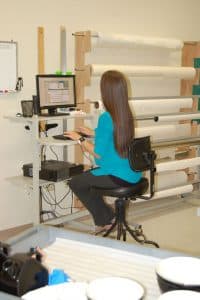
By Julie Kemper, Kentucky Historical Society
We all depend on our collections management software (CMS), but some days it just won’t do what we want it to. Right? It can be frustrating and we wonder if our institution is using the best software for our needs. The task of evaluating the program we use and comparing it to the many options available can be difficult. Small museums that are considering packaged CMS for the first time can find it overwhelming.
A recent national study, Museum Technology Landscape 2018: Discovery and Findings, conducted by Balboa Park Online Collective created for LYRASIS, looked at the relationship between museums, CMS, and CMS vendors. “It may or may not come as a surprise that approximately half of respondents would like to replace their current CMS, but perceived the pain of migration to be greater than the pain or limitations of their current system.” remarked Nik Honeysett, a Balboa Park Online Collective staff member.
AASLH has created a task force to aid history institutions—even those with little or no technology support—in navigating the data and process of acquiring a CMS. Task force members include history and technology professionals with a wide variety of experience. Joining the group are Canadian Heritage Information Network (CHIN) staff members. CHIN was already collecting information on CMS, and have made the Collections Management Software and Criteria Checklist and Request for Proposals for a Collections Management System available on the CHIN website. CHIN is now creating a detailed list of CMS vendor profiles, which it plans to release in late 2018. This detailed document includes information gathered through surveying a large number of CMS vendors, follow up interviews, and extensive research.
 The AASLH CMS task force project outcomes will include an AASLH Technical Leaflet providing guidelines and assistance, a “how-to” for creating a Request for Proposal (RFP), and CMS vendor list. The CHIN CMS research and also a CMS list from the ICOM International Committee for Documentation’s Encyclopaedia of Museum Practice will provide a base for the vendor list. The AASLH resource will layer details for easy use by staff with a variety of technical knowledge. It will also include information about topics museums most often ask about, including data entry features, price, system requirements, training availability, security, and reporting.
The AASLH CMS task force project outcomes will include an AASLH Technical Leaflet providing guidelines and assistance, a “how-to” for creating a Request for Proposal (RFP), and CMS vendor list. The CHIN CMS research and also a CMS list from the ICOM International Committee for Documentation’s Encyclopaedia of Museum Practice will provide a base for the vendor list. The AASLH resource will layer details for easy use by staff with a variety of technical knowledge. It will also include information about topics museums most often ask about, including data entry features, price, system requirements, training availability, security, and reporting.
The AASLH Technical Leaflet will be published in 2019. It will be useful for any institution, but is aimed at small and mid-sized museum with few or no technology specialists on staff. The leaflet will:
- explain why it is important to have the right CMS for your institution
- where to find detailed information about various companies offering CMS
- how to identify the most important needs for you institution
- how to decide if you need off-the-shelf, custom made, or something in between
- will help users navigate technical language
The AASLH CMS task force, in cooperation with CHIN, are working to make the process of choosing and supporting a CMS easier. The project will help museums and historic organizations all over North America.
At the upcoming AASLH Annual Meeting, members of the CMS task force will guide a conversation on the topic, “Making New Collections Management Software Systems Easier,” to discuss challenges to finding a new CMS system and hear about some new tools to make it easier. Our hope is to gather more information to ensure we meet the needs of museums and history organizations in navigating the difficult task of choosing a collections management system. We hope to see you at the Conversations Area on September 28 from 11:45 – 12:30 pm!



